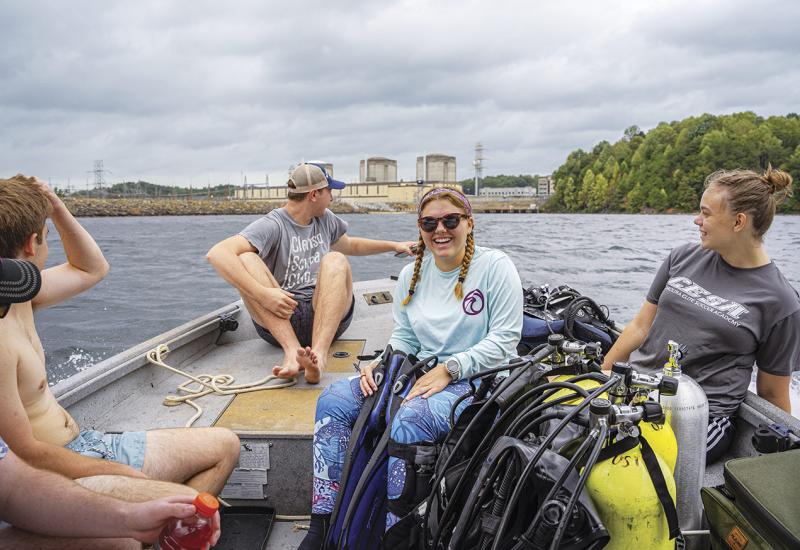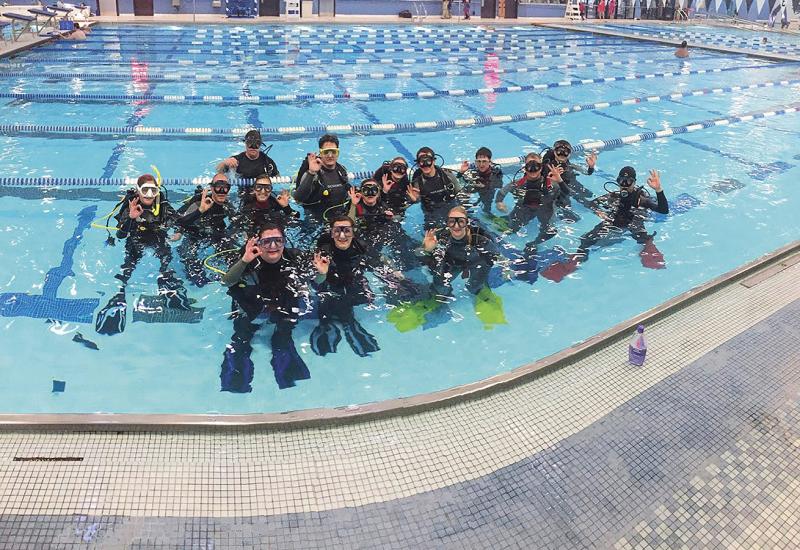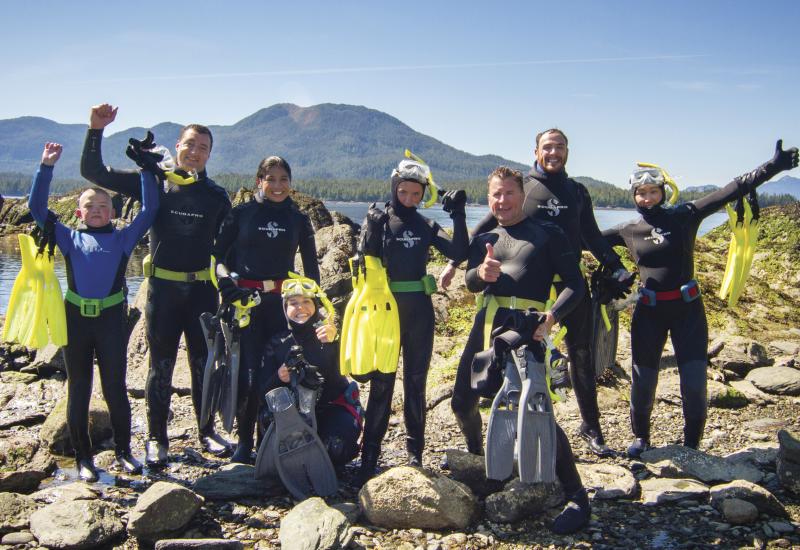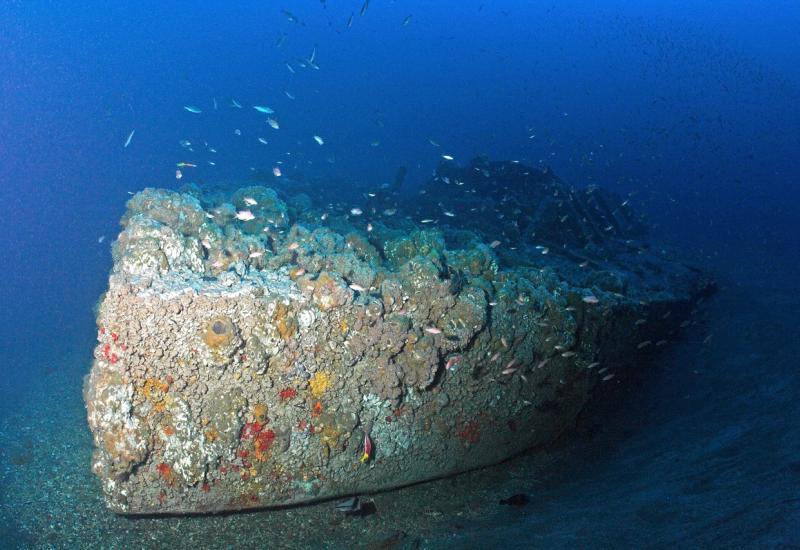A Local Diving Guide to California’s Catalina Island
COVID-19 travel restrictions and border closings are constantly evolving. There is no guarantee that the dive sites mentioned within this article will be open at your time of travel.
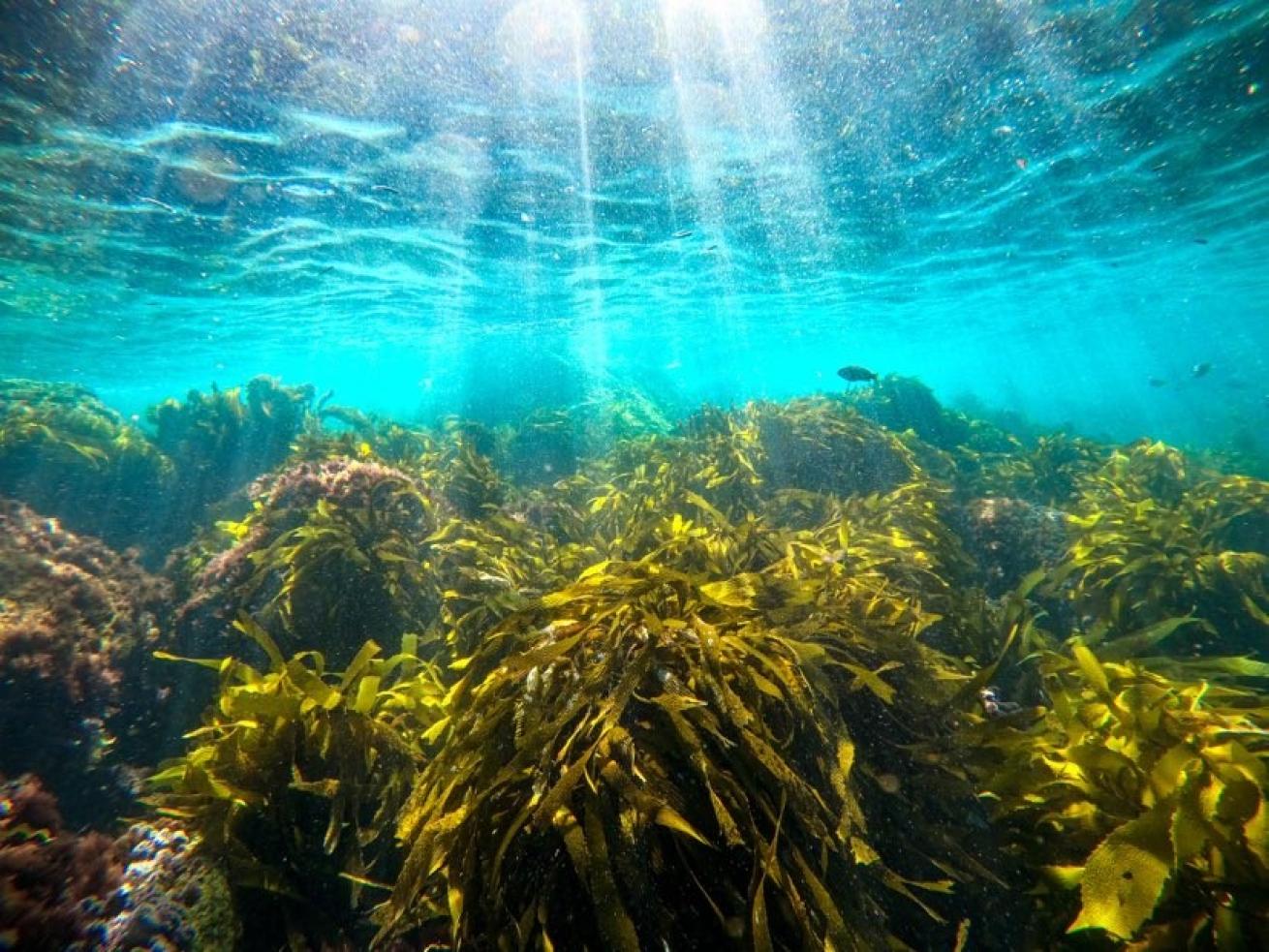
Courtesy Jack FishmanCatalina is a reliable place to see California's disappearing kelp forests.
Ethereal kelp forests draw droves of divers to Catalina every year, promising flittering garibaldi and the elusive chance to encounter endangered giant black sea bass. Beyond these headliners, divers can explore peaks and caves or hunt lobsters in the refreshing Pacific waters.
Here’s what you need to know to dive one of California’s most popular scuba sites.
Need to Know
Conditions
Water temperatures around Catalina bottom out in the mid-50s in winter, swinging up to 70 degrees in late summer. Visibility averages between 30 and 40 feet, with higher visibility in the winter and lower in the summer. For divers equipped to handle colder waters, January and February offer the best visibility and the smallest crowds.
Getting There
If you’re looking to arrive in style, you can access Catalina from the mainland in just 15 minutes via helicopter.

Alexandra GillespieThe Catalina Express station of San Pedro sits in the Port of Los Angeles.
For the rest of us, the hour-long ferry ride will have to do. Take your pick between the Catalina Express and the Catalina Flyer, both of which leave several times a day from a smattering of Orange County cities—round trip tickets cost around $75. It’s advisable to arrive 40 minutes before the scheduled departure to leave time for getting onboard. Divers can often get a ticket day-of, but ferries are currently operating at half-capacity due to COVID health regulations, so plan your transportation two or so weeks in advance for the time being.
Fortunate ferry commuters get a free whale watching tour; if your captain spots a whale breach while crossing to the island, he or she will stop the boat and announce the sighting so passengers have time to eye the waters.
Equipment
Most divers opt for a 7 mm and hood to combat the cool Pacific waters, but some locals find a 5 mm is enough in the summer. Even if you own a full kit, consider renting bulkier equipment, like tanks or weights on the island so you don’t have to haul them with you on the ferry. A rolling bag is the easiest way to schlep gear onto the ferry and to your site.
Operators
Whether looking for a guide, course, boat dive or gear rental, you have several options on the island including Catalina Divers Supply, Catalina Scuba, Ron Moore’s Dive Catalina, and Diving Catalina. Diving Catalina’s gear rentals are $80 for a full kit; for a la cart rentals consider Catalina Divers Supply, where multi-day gear rentals are discounted, or Ron Moore’s Dive Catalina.
Useful certifications
Open water certifications are enough to experience the island’s famous kelp forests, but advanced, deep diver and nitrox certifications allow divers to explore more broadly, logging beloved sites like Farnsworth.
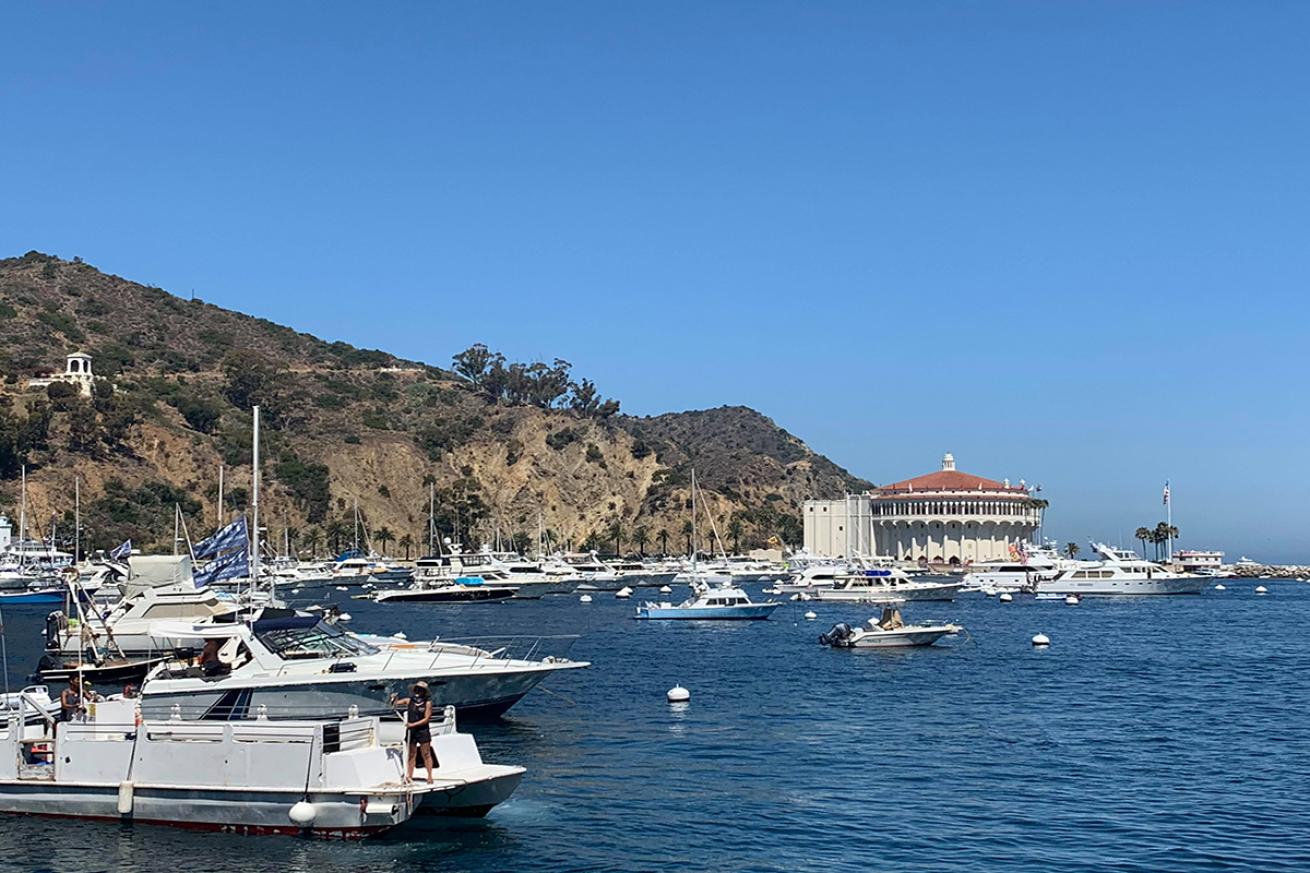
Alexandra GillespieCasino Point Park, a popular dive spot, is less than a mile from the ferry drop-off in Avalon and visible from the dock.
Popular Sites
Casino Point Dive Park
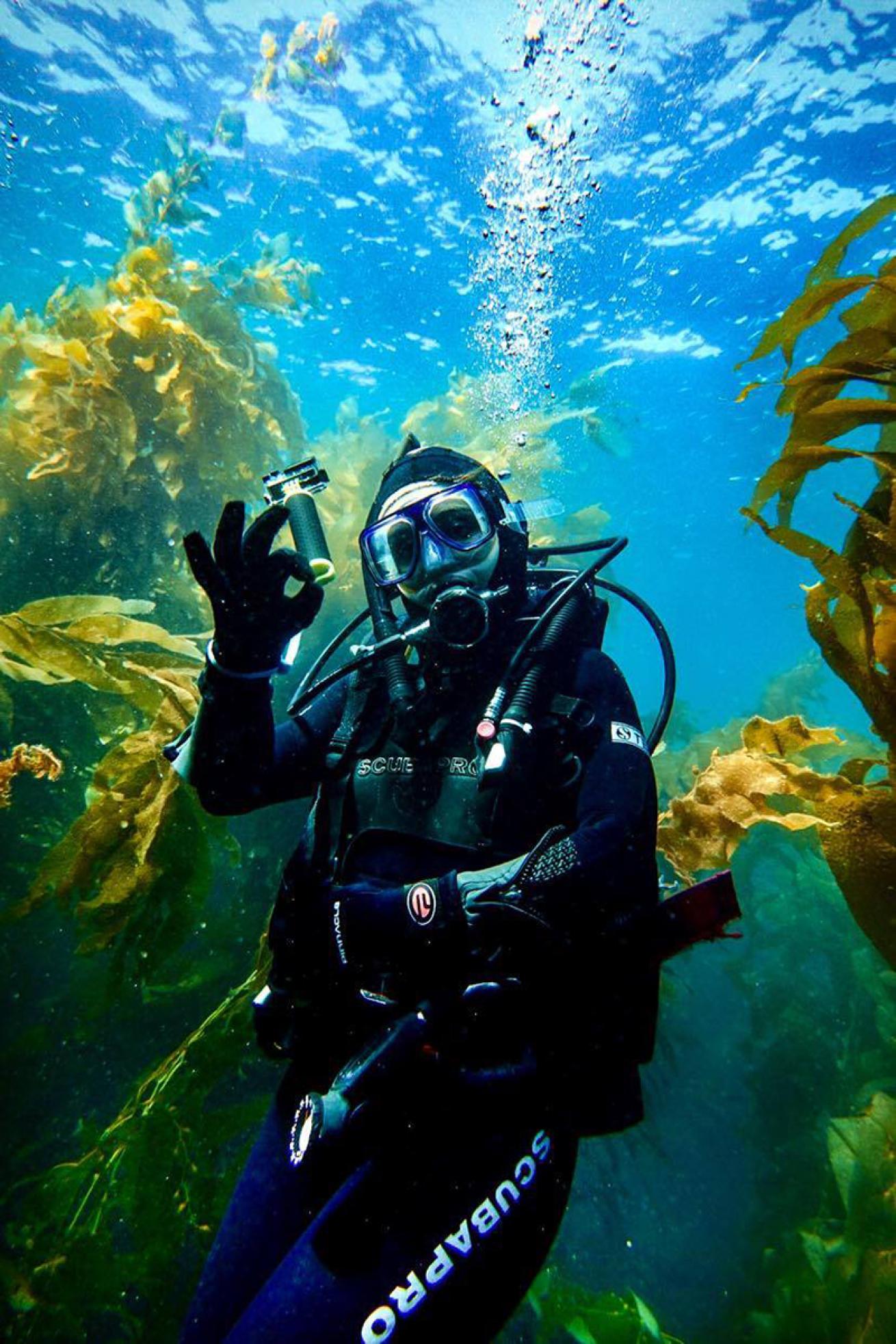
Courtesy Jack FishmanThe author floats amid the kelp forests of Avalon's Casino Point.
Stairs into the sea at Casino Point Park drop divers straight into dancing kelp and friendly garibaldi. Lucky divers may spot giant sea bass, which can grow beyond 550 pounds, deeper in the forests. Summer visibility ranges from ten to 30 feet, with brisk winter waters clear up to 100 feet. The site, adjacent to the island’s famous Old Hollywood casino, is less than a mile from Avalon’s ferry drop-off. Direct shore access and sea life only feet below the surface make this site a great beginner dive, though divers should take care not to get entangled in the kelp.
Blue Cavern Point
Ninety feet deep in one of California’s strictest marine preserves rest caverns and caves carved out of a deep shelf. The area’s majestic blue waters house soupfin sharks, sea lions, harbor seals and sea bass. A strong current and prohibition on anchoring make drift diving with a live boat a common method for accessing the site.
Farnsworth
An advanced boat dive two miles off the island, Farnsworth’s pinnacles are easy to miss. It is difficult to anchor, and the area’s strong current can push divers past. But those who find the site, which extends from 50 to 160 feet below the surface, will be rewarded with purple hydro coral, nudibranchs and pelagic fish.
Citizen Science Opportunity
Help scientists at UC Santa Barbara monitor California’s population of critically endangered giant sea bass. Photos taken of the left or right side of the fish capture the animal’s identical markings, which scientists can use to estimate the population or track seasonal migration. Divers can take part in the effort by submitting their photos or video of their encounter online.
Watch video of a giant sea bass encounter:
Related

